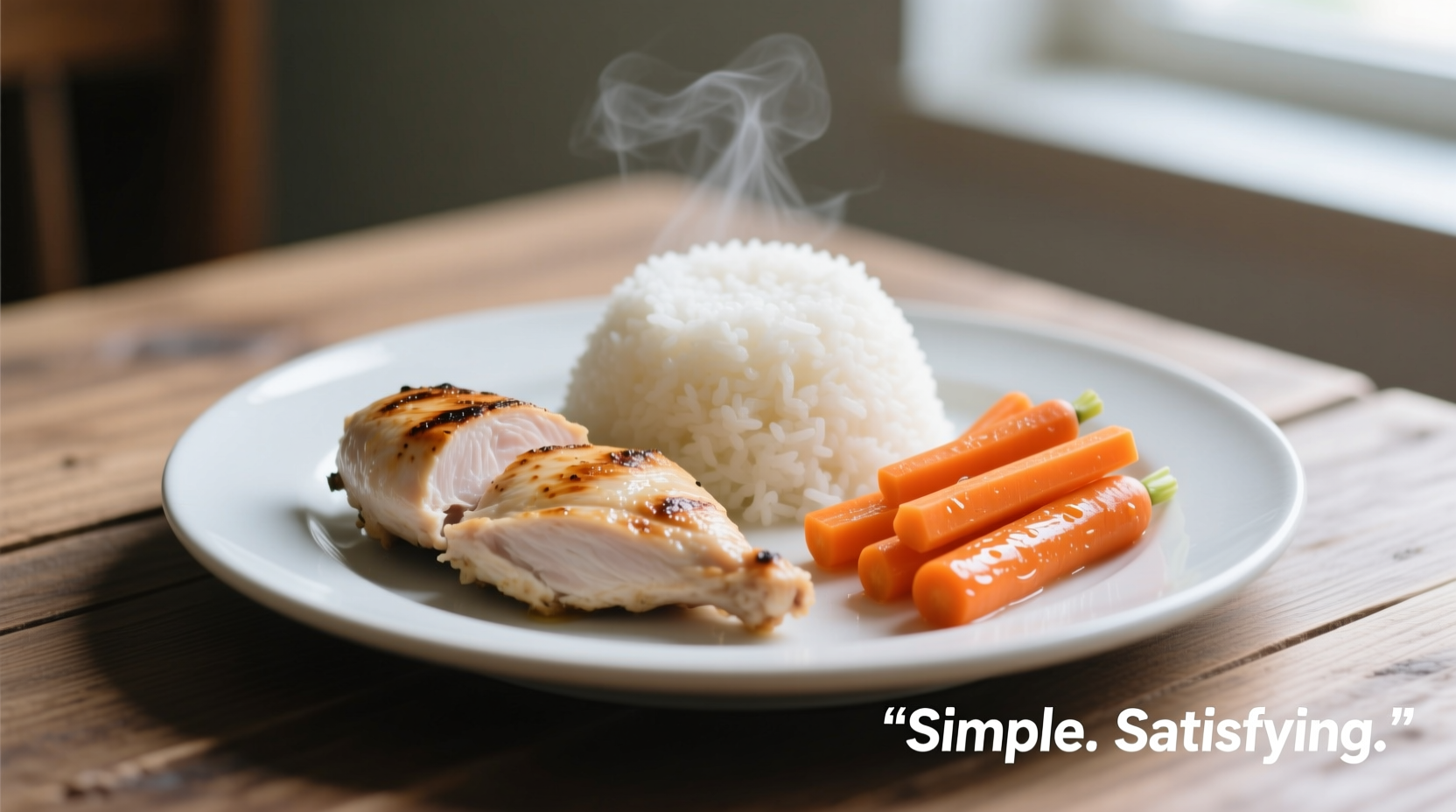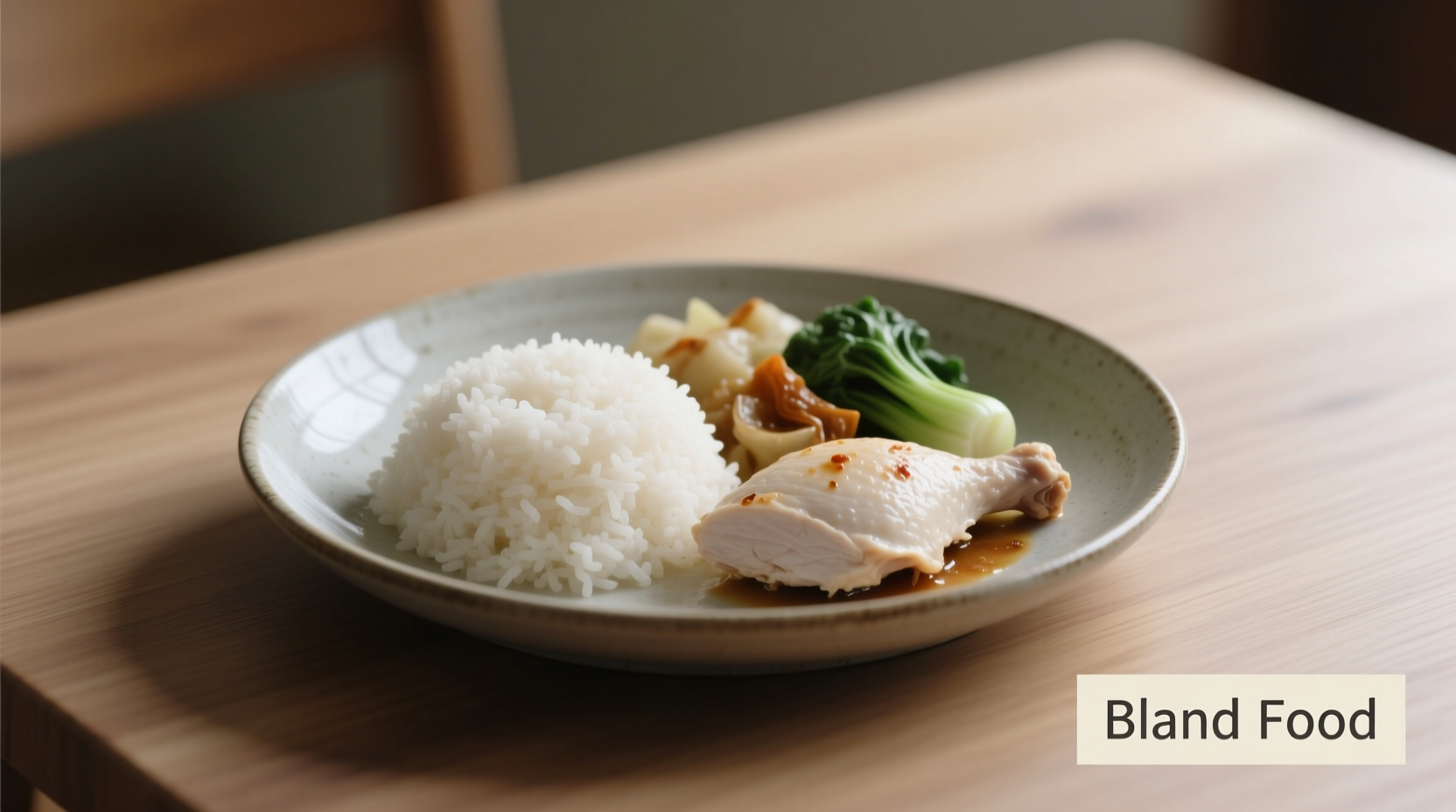Bland food refers to meals made with minimal spices, fats, and irritants that are gentle on the digestive system. It's commonly recommended after surgery, during digestive flare-ups, or for specific medical conditions like gastritis or ulcers. A proper bland food diet focuses on low-fiber, low-acid ingredients that reduce stomach irritation while providing essential nutrition.
When your digestive system needs a break, bland food becomes your most valuable ally. Unlike regular meals packed with spices and complex flavors, bland food prioritizes gentle nourishment that won't aggravate sensitive stomachs. This dietary approach isn't about deprivation—it's about strategic nourishment during critical recovery periods. Whether you're managing acid reflux, recovering from gastrointestinal surgery, or dealing with inflammatory bowel disease, understanding bland food principles can significantly shorten your healing time and reduce discomfort.
Defining Bland Food: Beyond the Basic Definition
The term "bland" often carries negative connotations of boring or tasteless meals. In medical and nutritional contexts, however, bland food serves a specific therapeutic purpose. Bland foods are characterized by their low potential to stimulate gastric acid secretion or irritate the digestive tract. According to the Mayo Clinic, these foods typically feature:
- Minimal seasoning (especially avoiding pepper, chili, garlic, and strong spices)
- Low fat content (eliminating fried foods and heavy creams)
- Low fiber composition (removing tough skins, seeds, and whole grains)
- Neutral pH levels (avoiding highly acidic ingredients like tomatoes and citrus)
- Simple preparation methods (boiling, steaming, or baking without added fats)
Contrary to popular belief, bland food isn't synonymous with flavorless food. Skilled culinary professionals like Antonio Rodriguez emphasize that "bland doesn't mean boring—it means strategically removing irritants while preserving nutritional value and subtle flavors."
When Bland Food Becomes Essential: Medical Applications
Bland food diets serve as crucial therapeutic tools across various medical scenarios. The National Institute of Diabetes and Digestive and Kidney Diseases (NIDDK) identifies specific conditions where bland eating patterns provide significant benefits:
| Medical Condition | Recommended Duration | Key Dietary Focus |
|---|---|---|
| Gastritis or stomach ulcers | 2-6 weeks | Avoiding acid triggers, reducing spice exposure |
| Post-gastrointestinal surgery | 4-8 weeks | Progressing from liquids to soft solids gradually |
| Irritable Bowel Syndrome (IBS) flare-ups | 3-14 days | Reducing FODMAPs and fiber content |
| Diverticulitis recovery | 2-4 weeks | Minimizing fiber until inflammation subsides |
This structured approach demonstrates how bland food serves as a temporary therapeutic intervention rather than a permanent dietary solution. The Cleveland Clinic emphasizes that "bland diets should be followed only as long as medically necessary, as prolonged use may lead to nutritional deficiencies."
Bland Food Evolution: From BRAT to Modern Approaches
The concept of therapeutic bland eating has evolved significantly over the past century. Historically, medical professionals recommended the BRAT diet (Bananas, Rice, Applesauce, Toast) as the gold standard for digestive recovery. However, contemporary nutrition science reveals important limitations in this approach:
- 1920s-1980s: BRAT diet becomes standard medical recommendation for digestive issues
- 1990s: Research reveals BRAT's nutritional deficiencies, particularly lacking protein and healthy fats
- 2000s: Medical community begins recommending modified bland diets with added nutrients
- 2010s-Present: Personalized bland eating approaches based on specific digestive conditions
Today's evidence-based approach incorporates lean proteins, complex carbohydrates, and healthy fats in carefully measured amounts. The Academy of Nutrition and Dietetics now recommends supplementing traditional bland foods with boiled chicken, egg whites, and oatmeal to maintain proper nutrition during recovery periods.

Building Your Bland Food Plate: What to Include and Avoid
Creating effective bland meals requires understanding both what to include and what to eliminate. The following guidelines help navigate this dietary approach without compromising nutritional needs:
Foods That Belong on Your Bland Plate
- Proteins: Boiled or baked chicken breast, egg whites, tofu, lean ground turkey
- Carbohydrates: White rice, plain pasta, saltine crackers, oatmeal (without added flavors)
- Fruits: Bananas, applesauce, canned pears (in juice, not syrup)
- Vegetables: Carrots, green beans, potatoes (without skin), zucchini
- Dairy: Low-fat yogurt, cottage cheese, mild cheeses in moderation
Foods to Eliminate During Bland Eating Periods
- Spicy ingredients (pepper, chili, hot sauce, garlic, onion)
- Fried or greasy foods
- High-fiber foods (whole grains, raw vegetables, berries)
- Acidic foods (tomatoes, citrus fruits, vinegar)
- Caffeine and carbonated beverages
- Alcohol and mint flavors
It's crucial to recognize that "bland" doesn't mean nutritionally deficient. A well-constructed bland meal still provides essential vitamins, minerals, and macronutrients—just without the digestive irritants. The key is strategic food selection and preparation methods that maintain nutritional integrity while minimizing stomach stress.
Practical Implementation: Making Bland Food Palatable
One of the biggest challenges with bland food diets is maintaining adherence when meals seem unappealing. Professional chefs specializing in therapeutic cuisine recommend these practical strategies:
- Temperature control: Serve foods at moderate temperatures—neither too hot nor too cold—as extremes can trigger digestive discomfort
- Texture variation: Combine different soft textures (creamy oatmeal with smooth applesauce) to create interest without irritation
- Subtle flavor layering: Use minimal amounts of acceptable seasonings like a pinch of basil or a squeeze of lemon (if tolerated)
- Strategic meal timing: Eat smaller portions more frequently to avoid overwhelming your digestive system
- Hydration management: Drink fluids between meals rather than with meals to avoid diluting digestive enzymes
"The goal isn't to eliminate all flavor, but to identify which flavor components your system can tolerate during recovery," explains culinary nutrition expert Antonio Rodriguez. "Even within a bland diet framework, there's room for thoughtful flavor development that supports healing rather than hinders it."
Important Considerations and Limitations
While bland food diets offer significant therapeutic benefits, they come with important limitations and considerations:
- Nutritional completeness: Extended bland eating (beyond 4 weeks) may lead to deficiencies in fiber, certain vitamins, and healthy fats
- Individual variation: What's bland for one person might irritate another—personal tolerance varies significantly
- Medical supervision: Always follow bland diet recommendations under healthcare provider guidance
- Transition planning: Gradually reintroduce regular foods to avoid digestive shock
The American Gastroenterological Association cautions that "bland diets should never replace medical treatment for underlying conditions." They serve as complementary approaches to support healing, not as standalone treatments for serious digestive disorders.
When Bland Food Isn't the Answer
Not all digestive concerns require a bland food approach. Certain conditions actually benefit from increased fiber or specific dietary components that would be excluded in a traditional bland diet. For example:
- Chronic constipation typically requires increased fiber, contrary to bland diet principles
- Some forms of irritable bowel syndrome respond better to specific carbohydrate diets rather than general bland eating
- Nutritional rehabilitation after severe illness often requires richer, more calorically dense foods
This highlights why professional medical guidance is essential before implementing any therapeutic diet. Self-prescribing a bland food regimen without understanding your specific condition could potentially worsen certain digestive issues.
Transitioning Off a Bland Food Diet
As your digestive system heals, gradually reintroducing regular foods becomes necessary. This transition should follow a structured approach:
- Week 1: Introduce one new food item every 2-3 days, starting with mildly flavored options
- Week 2: Gradually increase fiber content while monitoring for reactions
- Week 3: Reintroduce moderate spices and seasonings in small amounts
- Week 4: Return to regular diet while maintaining awareness of personal triggers
Keeping a food journal during this transition helps identify specific triggers that may need permanent modification in your regular diet. The goal isn't necessarily to return to your exact pre-illness eating pattern, but to develop a sustainable long-term approach that prevents future flare-ups.











 浙公网安备
33010002000092号
浙公网安备
33010002000092号 浙B2-20120091-4
浙B2-20120091-4